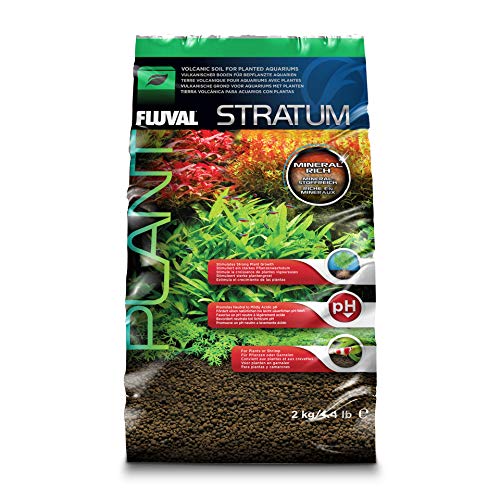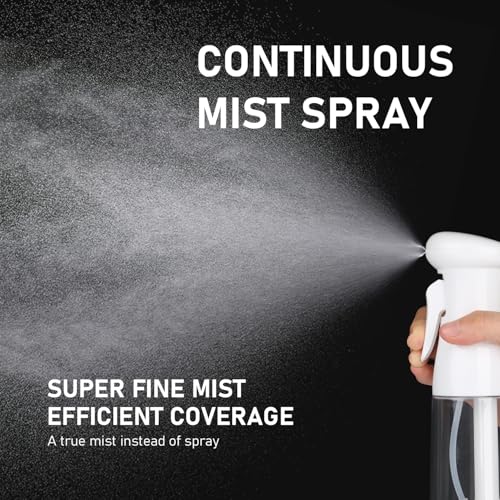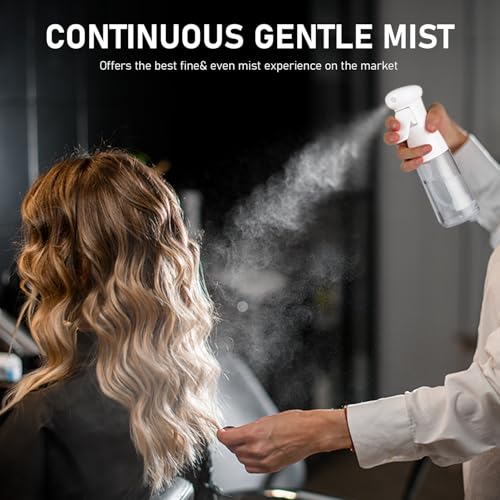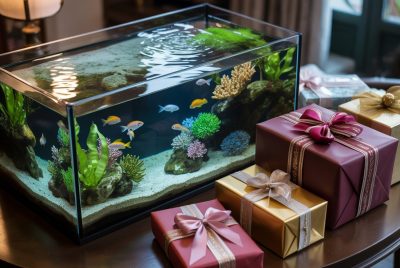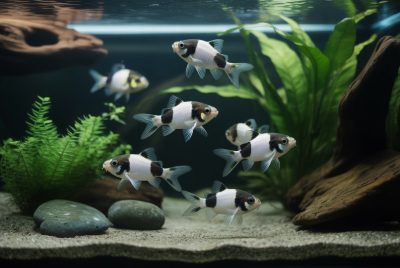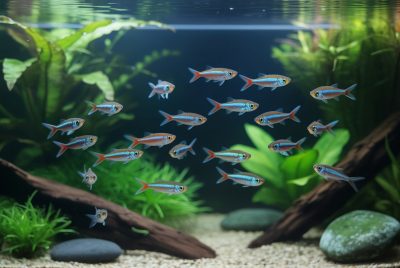Wabi-Kusa: The Art of Aquatic Plant Spheres
*We may earn a commission for purchases made using our links. Please see our disclosure to learn more.
Picture walking into a room where delicate spheres of vibrant green life sit gracefully on wooden stands, each one telling its own story of growth and transformation. These aren’t ordinary houseplants—they’re wabi-kusa, the fascinating Japanese art form that brings aquatic plants into terrestrial environments, creating miniature ecosystems that capture the essence of nature’s imperfect beauty.
“The beauty of wabi-kusa lies not in perfection, but in the natural harmony that emerges when aquatic plants find their own way to grow.”
– Japanese Aquascaping Philosophy
Key Takeaways
- Wabi-Kusa Definition: A Japanese aquascaping technique that grows aquatic plants emersed (above water) in moss-covered spheres
- Cultural Significance: Embodies the Japanese aesthetic principles of wabi-sabi, finding beauty in imperfection and transience
- Versatile Display: Can be enjoyed as standalone terrestrial displays or later transitioned into aquariums
- Low Maintenance: Requires minimal care once established, making it perfect for busy lifestyles
- Creative Expression: Offers endless possibilities for artistic arrangement and plant combinations
- Space Efficient: Ideal for small living spaces where traditional aquariums aren’t practical
Recommended Wabi-Kusa Products on Amazon
1. Fluval Plant and Shrimp Stratum
Enhance your planted aquarium with Fluval Plant and Shrimp Stratum, designed for optimal plant growth and a thriving shrimp community. Its porous granules support rapid colonization of beneficial bacteria, fostering a healthy ecosystem. Ideal for freshwater tanks, this substrate maintains a neutral to slightly acidic pH—perfect for supporting vibrant aquatic plants, tropical fish, and delicate shrimp. The stratum provides natural shelter for newborn shrimp, ensuring their safety during early development. Plus, it keeps water clear by reducing discoloration from organic materials like driftwood.
A specialized growing medium crafted for planted freshwater aquariums. This porous substrate promotes rapid beneficial bacteria colonization and healthy root development, providing the perfect foundation for lush aquatic plant growth and thriving shrimp colonies.
- Promotes Healthy Aquatic Life: Supports rapid beneficial bacteria growth for stable water conditions and plant health.
- Ideal pH Balance: Maintains a neutral to slightly acidic pH, beneficial for most tropical fish and shrimp species.
- Shrimp Protection: Provides natural hiding spots for newborn shrimp, safeguarding them from potential predators.
- Higher Price Point: Slightly more expensive than generic substrates, especially for larger aquariums.
- Initial Cloudiness: May cause slight water cloudiness upon first use, requiring careful rinsing or setup patience.
- Fragile Structure: Granules can break down over time with rough handling or aggressive cleaning methods.
2. besgrow Premium New Zealand Sphagnum Moss
Bring the natural beauty of New Zealand’s South Island into your home or garden with Besgrow Spagmoss. Sustainably harvested and 100% natural, this premium sphagnum moss is known for its long, strong strands and exceptional water retention capabilities. Ideal for growing orchids, carnivorous plants, or even as a reptile bedding, this moss holds up to 20 times its weight in water, encouraging strong root development and providing consistent moisture. With minimal impurities, low soluble salt content, and natural sterility, it’s perfect for moisture-loving plants, commercial growers, and hobbyists alike.
High-quality sphagnum moss ideal for moisture-loving plants and wabi-kusa creations. This natural material provides excellent water retention and aeration, creating the perfect environment for healthy root growth and sustained plant health.
- Exceptional Water Retention: Holds up to 20 times its weight in water, ensuring consistent moisture for plant roots.
- Versatile Use: Suitable for orchids, carnivorous plants, reptile habitats, and floral arrangements.
- 100% Natural & Clean: Hand-picked, air-dried, and chemical-free, offering a pure and safe growing medium.
- Higher Price Point: Slightly more expensive compared to locally sourced or bulk sphagnum moss options.
- Limited Size Options: Available primarily in small quantities, which may not suffice for large projects.
- Preparation Required: Needs hydration before use to reach full water-holding capacity and desired volume.
3. Misting Spray Bottle Set
Elevate your hairstyling, cleaning, and plant care with these ultra-fine continuous mister spray bottles. Crafted from premium PET and PP materials, they deliver a consistent, super-fine mist that evenly covers hair, plants, pets, and more without oversaturation. With a 360° design and a pre-compression trigger, they produce long-lasting bursts of mist for effortless coverage of hard-to-reach areas. Leak-proof, durable, and eco-friendly, these bottles are perfect for home, salon, and daily use.
Ultra-fine mister bottles designed for maintaining high humidity levels in your wabi-kusa creations. The continuous mist effortlessly recreates natural, humid conditions, supporting healthy aquatic plant growth when grown emersed.
- Ultra-Fine Mist: Provides consistent, even coverage with a delicate spray.
- Durable & Leak-Proof: Sturdy PET/PP construction ensures longevity and no leaks.
- Versatile Use: Perfect for hairstyling, plants, pets, cleaning, and aromatherapy.
- Small Capacity: 6.8 oz size may require frequent refills for heavy use.
- Pre-Compression Needed: Requires multiple trigger pulls to generate continuous spray.
- Plastic Build: While durable, may not appeal to those preferring glass or metal alternatives.
4. LED Plant Growth Light
The GooingTop LED Grow Light delivers full-spectrum 6000K light with a perfect balance of white and red LEDs to mimic natural sunlight, promoting healthy indoor plant growth. Featuring a 5-level dimmable setting and an auto on/off timer with 4, 8, or 12-hour cycles, this energy-efficient lamp is ideal for seedlings, herbs, and small houseplants. Its flexible gooseneck and strong clamp make installation simple and adjustable to any angle, ensuring optimal light coverage.
Full-spectrum LED lighting tailored for wabi-kusa enthusiasts. This energy-efficient lamp delivers a balanced light spectrum, promoting robust growth and vibrant colors in both aquatic and terrestrial plant arrangements. Ideal for recreating natural light conditions indoors.
- Performance: Provides full-spectrum light with 10 red and 74 white LEDs for optimal plant growth
- Convenience: Timer function with 3 automatic settings (4, 8, 12 hours) for hassle-free use
- Flexibility: Adjustable gooseneck and sturdy clamp allow precise positioning
- Coverage: Best suited for small to medium plants, not large grow areas
- Power Source: Requires USB or AC power, limiting outdoor or portable use without adapters
- Light Intensity: May be too bright for shade-loving plants without dimming adjustments
The Journey into Wabi-Kusa Mastery
The story of wabi-kusa begins in the innovative minds of Japanese aquascapers who wanted to bridge the gap between aquatic and terrestrial plant keeping. This unique approach transforms traditional aquarium plants into living sculptures that thrive in humid, terrestrial environments.
Understanding the Philosophy Behind Wabi-Kusa
Wabi-kusa translates roughly to “grass of imperfection,” reflecting the Japanese aesthetic philosophy of wabi-sabi. This concept celebrates the beauty found in imperfection, impermanence, and incompleteness. When applied to aquatic plant cultivation, it creates displays that feel organic and naturally evolved rather than artificially controlled.
The technique involves carefully selecting aquatic plants known for their ability to grow emersed—above water level—and creating small ecosystems that can survive and thrive in humid air rather than submerged conditions. These plants, typically used in aquascaping, reveal entirely different characteristics when grown this way, often displaying more vibrant colors, different leaf shapes, and unique growth patterns.
The Transformation Process: From Water to Air
Creating wabi-kusa involves a fascinating transformation process where aquatic plants adapt to life above water. This transition period, known as emersed growth, allows plants to develop stronger root systems and more resilient foliage. The process requires patience and understanding of each plant’s specific needs during this adaptation phase.
Many aquatic plants naturally grow emersed in their native habitats during certain seasons or water level conditions. By recreating these conditions artificially, wabi-kusa practitioners can observe plants in their most natural state, often revealing characteristics that remain hidden when the plants are kept permanently submerged.
Essential Techniques for Wabi-Kusa Success
Selecting the Right Plants
The foundation of successful wabi-kusa lies in choosing plants that can adapt well to emersed conditions. Some species excel in this environment, developing more robust foliage and interesting textures that aren’t visible when submerged. Popular choices include various species of Anubias, which develop thick, waxy leaves; Bucephalandra, known for its colorful foliage; and different moss species that create natural carpeting effects.
Each plant brings its own character to the wabi-kusa sphere. Some contribute height and structure, while others provide ground cover or cascading elements. The art lies in combining these different growth habits to create a balanced, visually appealing miniature landscape.
Creating the Perfect Growing Medium
The substrate used in wabi-kusa differs significantly from traditional aquarium substrates. It must retain moisture while providing excellent drainage and air circulation to prevent root rot. A typical mixture combines specialized aquatic plant substrates with organic materials like peat moss and coconut fiber, creating a medium that supports both moisture retention and healthy root development.
The preparation of this growing medium requires careful attention to nutrient content and pH levels. Many practitioners develop their own signature substrate mixtures, adjusting ratios based on the specific needs of their chosen plant combinations and local environmental conditions.
Mastering the Wrapping Technique
The physical construction of wabi-kusa spheres involves carefully wrapping the plant roots and growing medium in sphagnum moss, creating a ball-like structure that can be displayed on stands or in shallow containers. This wrapping technique requires practice to achieve the right balance between securing the plants and allowing room for growth.
The moss serves multiple functions: it retains moisture, provides additional growing medium for epiphytic plants, and creates the aesthetic foundation for the display. Over time, the moss may develop its own small ecosystem, sometimes hosting beneficial microorganisms that support plant health.
Overcoming Common Wabi-Kusa Challenges
Managing Humidity and Moisture Levels
One of the most critical aspects of wabi-kusa maintenance involves maintaining proper humidity levels. Too little moisture, and the plants will struggle to adapt from their aquatic origins. Too much moisture, and fungal issues may develop. Finding the right balance requires observation and adjustment based on environmental conditions and plant responses.
Many practitioners use humidity domes or enclosed display cases during the initial establishment period, gradually acclimating plants to lower humidity levels as they develop stronger emersed characteristics. This gradual transition helps prevent shock and ensures long-term success.
Preventing Mold and Fungal Issues
The high humidity environment that benefits wabi-kusa plants can also create conditions favorable for unwanted mold and fungi. Proper air circulation becomes crucial, requiring strategic placement of displays and sometimes the use of small fans to maintain gentle air movement without creating drafts that could dry out the plants.
Regular inspection and maintenance help catch potential issues early. Removing any dead or dying plant material promptly prevents the spread of decay and maintains the health of the overall ecosystem.
Lighting Considerations for Indoor Displays
Unlike submerged aquatic plants that receive filtered light through water, emersed wabi-kusa plants require different lighting considerations. The intensity, spectrum, and duration of lighting all play crucial roles in plant health and appearance. Many practitioners find that LED lighting designed for aquarium use works well, but positioning and timing require adjustment for terrestrial display.
Natural lighting can supplement artificial sources, but direct sunlight should be avoided as it can quickly dry out the moss wrapping and stress the plants. Finding the right balance often involves experimenting with different positions and lighting schedules until optimal growth patterns emerge.
The Artistic Expression of Wabi-Kusa
Designing Natural Compositions
Creating visually appealing wabi-kusa displays involves understanding principles of natural design and composition. Unlike formal gardening approaches, wabi-kusa embraces asymmetry and natural randomness. The goal isn’t to create perfect symmetry but to achieve balance through the thoughtful placement of different plant textures, colors, and growth habits.
Many practitioners develop their own aesthetic preferences, influenced by different schools of Japanese design philosophy. Some prefer minimalist approaches with few plant species, while others create complex arrangements that showcase the diversity of aquatic plant forms and colors.
Seasonal Adaptations and Changes
One of the most rewarding aspects of wabi-kusa cultivation is observing how displays change over time. Plants that look one way during establishment may develop completely different characteristics as they mature in their emersed environment. Seasonal changes in ambient humidity, temperature, and light can trigger interesting responses in plant growth and coloration.
These natural changes align with the wabi-sabi philosophy of appreciating impermanence and the beauty of natural cycles. Rather than fighting these changes, experienced practitioners learn to anticipate and appreciate them as part of the art form’s appeal.
Integration with Interior Design
Wabi-kusa displays can be integrated into various interior design styles, from modern minimalist spaces to more traditional environments. The natural textures and colors provide organic elements that soften hard architectural lines and bring life to sterile environments. The compact size makes them suitable for small apartments or office spaces where larger plants might not be practical.
The versatility of display options—from simple wooden stands to elaborate glass enclosures—allows practitioners to customize their presentations to match existing décor while maintaining the essential humidity and lighting requirements for plant health.
Advanced Wabi-Kusa Techniques
Creating Multi-Level Displays
Advanced practitioners often create complex arrangements using multiple wabi-kusa spheres at different heights and positions. These installations can transform entire walls or corners into living art installations that change and evolve over time. The challenge lies in maintaining consistent environmental conditions across multiple displays while creating visually interesting compositions.
Multi-level displays allow for the creation of more complex ecosystems where different humidity levels and light conditions at various heights can support different plant species with varying environmental preferences.
Transitioning Between Aquatic and Terrestrial States
One unique aspect of wabi-kusa is its flexibility—displays can be transitioned back into aquatic environments when desired. This transition process requires careful planning and gradual changes to prevent plant shock. Understanding which plants adapt well to these transitions and which prefer to remain in one state helps in planning long-term display strategies.
The ability to move between terrestrial and aquatic displays adds another dimension to the hobby, allowing practitioners to enjoy their plants in different formats and to experiment with various presentation styles throughout the year.
Developing Signature Styles
As practitioners gain experience, many develop their own signature approaches to wabi-kusa creation. These personal styles might emphasize certain plant combinations, specific aesthetic principles, or innovative display techniques. The development of individual style represents the mature expression of understanding both the technical requirements and artistic possibilities of the medium.
Some practitioners specialize in miniature landscapes that tell specific stories or evoke particular moods, while others focus on showcasing the natural beauty of individual plant species in their most pristine forms.
The Broader Impact on Lifestyle and Wellbeing
Mental Health Benefits of Plant Interaction
The meditative aspects of creating and maintaining wabi-kusa displays provide significant mental health benefits. The careful, mindful work required for plant care creates opportunities for stress relief and mental reset. Many practitioners find that the daily routine of misting and observing their displays becomes a form of moving meditation that helps maintain emotional balance.
The connection with natural processes and the responsibility of caring for living systems provides a sense of purpose and accomplishment that can be particularly valuable for people living in urban environments with limited access to natural spaces.
Educational Opportunities and Skill Development
Wabi-kusa cultivation develops a wide range of skills, from understanding plant biology and environmental science to developing aesthetic sensibilities and patience. The hobby provides ongoing learning opportunities as practitioners experiment with new plant species, display techniques, and environmental modifications.
Many find that their understanding of plant biology, ecology, and environmental systems deepens through hands-on experience with wabi-kusa cultivation. This knowledge often transfers to other areas of plant care and environmental awareness.
Building Community Connections
The wabi-kusa community, both online and in person, provides opportunities for sharing experiences, troubleshooting problems, and celebrating successes. Many practitioners enjoy sharing photos of their displays and exchanging tips and techniques with others who appreciate the unique challenges and rewards of this specialized hobby.
Local aquascaping groups often include wabi-kusa enthusiasts, and specialized forums and social media groups provide platforms for international exchange of ideas and techniques. These communities can be particularly valuable for beginners seeking guidance and experienced practitioners looking to push the boundaries of the art form.
Practical Advice for Every Stage of the Journey
Starting Your First Wabi-Kusa
For beginners, starting with hardy, adaptable plant species provides the best chance of early success. Simple designs using readily available plants and basic materials allow new practitioners to learn fundamental techniques without overwhelming complexity. The key is to start small and gradually build skills and confidence through experience.
Initial investments in quality materials pay dividends in long-term success. While it’s possible to create wabi-kusa displays with minimal equipment, having proper substrate, quality moss, and adequate lighting makes the learning process much more enjoyable and successful.
Troubleshooting Common Problems
Every wabi-kusa practitioner encounters challenges along the way. Common issues include plants that fail to adapt to emersed conditions, humidity problems, and fungal growth. Learning to identify and address these problems quickly helps maintain display health and prevents more serious issues from developing.
Keeping detailed records of environmental conditions, plant responses, and maintenance activities helps identify patterns and improve future success rates. Many experienced practitioners maintain logs that help them refine their techniques and troubleshoot problems more effectively.
Expanding Your Skills and Displays
As confidence and skills develop, many practitioners enjoy expanding their displays and experimenting with more challenging plant species and complex designs. This progression might involve creating larger installations, trying rare or difficult plants, or developing specialized environmental conditions for particular plant groups.
The key to successful expansion is maintaining the quality of existing displays while gradually adding new challenges. Taking on too much too quickly can lead to maintenance problems and reduced success rates across all displays.
Celebrating Progress and Embracing Imperfection
Recognizing Small Victories
Success in wabi-kusa often comes in small increments—a plant that successfully adapts to emersed growth, a display that maintains its health through seasonal changes, or a new growth pattern that adds unexpected beauty to an arrangement. Learning to recognize and celebrate these small victories helps maintain motivation and appreciation for the subtle rewards of this practice.
Photography can be a valuable tool for documenting progress and changes over time. Many practitioners maintain visual records of their displays, creating time-lapse documentation that reveals gradual changes that might not be obvious during daily observation.
Learning from Failures and Setbacks
Inevitable failures and setbacks provide valuable learning opportunities in wabi-kusa cultivation. Plants that don’t adapt, displays that develop problems, or techniques that don’t work as expected all contribute to the learning process. The key is approaching these setbacks as learning opportunities rather than discouragements.
Many experienced practitioners consider their failures to be among their most valuable learning experiences. Understanding why something didn’t work often provides insights that lead to improved techniques and better success rates in future projects.
Adapting to Changing Circumstances
Life circumstances change, and successful wabi-kusa practitioners learn to adapt their hobby to fit changing schedules, living situations, and energy levels. This might involve simplifying displays during busy periods, developing more efficient maintenance routines, or finding ways to maintain involvement even when unable to create new displays.
The flexibility inherent in wabi-kusa—from simple single-sphere displays to complex installations—allows practitioners to scale their involvement up or down as circumstances require while maintaining connection to the hobby and its benefits.
Conclusion: Embracing the Wabi-Kusa Journey
The art of wabi-kusa offers a unique pathway into the world of aquatic plants and natural design that celebrates imperfection while creating beauty. This practice combines technical skill with artistic expression, patience with creativity, and individual exploration with community connection. Whether approached as a simple hobby or a serious artistic pursuit, wabi-kusa provides ongoing opportunities for learning, growth, and connection with the natural world.
The journey into wabi-kusa mastery is never truly complete—there are always new plants to try, techniques to explore, and aesthetic possibilities to investigate. This ongoing nature of the practice aligns perfectly with its philosophical foundations, embracing change and impermanence as essential elements of beauty rather than obstacles to overcome.
For those ready to begin their own wabi-kusa journey, remember that every expert was once a beginner. Start simple, be patient with yourself and your plants, and allow the natural processes of growth and adaptation to guide your learning. The rewards of creating these miniature ecosystems extend far beyond the visual beauty of the displays themselves, touching aspects of mental health, community connection, and personal growth that can enrich life in unexpected ways.
The path forward involves embracing both the technical challenges and artistic possibilities that wabi-kusa offers, finding personal expression within traditional techniques, and contributing to the broader community of practitioners who continue to explore and expand the boundaries of this fascinating art form.
Frequently Asked Questions
Q1: How long does it take for aquatic plants to adapt to wabi-kusa conditions?
The adaptation period typically ranges from 2-6 weeks, depending on the plant species and environmental conditions. During this time, plants may show signs of stress such as melting leaves or slow growth, which is normal as they develop emersed characteristics. Hardy species like Anubias typically adapt faster than more sensitive plants.
Q2: Can I use regular potting soil instead of specialized aquatic substrates for wabi-kusa?
While regular potting soil can work temporarily, specialized aquatic substrates are strongly recommended for long-term success. Regular soil may contain additives harmful to aquatic plants and often doesn’t provide the proper drainage and aeration needed for healthy root development in the high-humidity wabi-kusa environment.
Q3: How often should I mist my wabi-kusa displays?
Misting frequency depends on environmental conditions, but most displays benefit from light misting 1-2 times daily. Monitor the moss wrapping—it should feel slightly damp but not waterlogged. In very dry environments, more frequent misting may be necessary, while humid climates may require less frequent attention.
Q4: What’s the difference between wabi-kusa and regular houseplants?
Wabi-kusa specifically uses aquatic plants that can grow emersed (above water), creating unique textures and colors not seen in traditional houseplants. The moss-wrapped, spherical presentation and high-humidity requirements also distinguish it from conventional plant keeping. The plants often display different characteristics when grown emersed versus submerged.
Q5: Can I eventually plant my wabi-kusa sphere in an aquarium?
Yes, most wabi-kusa displays can be transitioned into aquariums, though the process requires gradual acclimation to prevent plant shock. Slowly increase water levels over several weeks, allowing plants to readjust to submerged conditions. Some plants may need trimming of emersed growth to encourage healthy submerged development.


